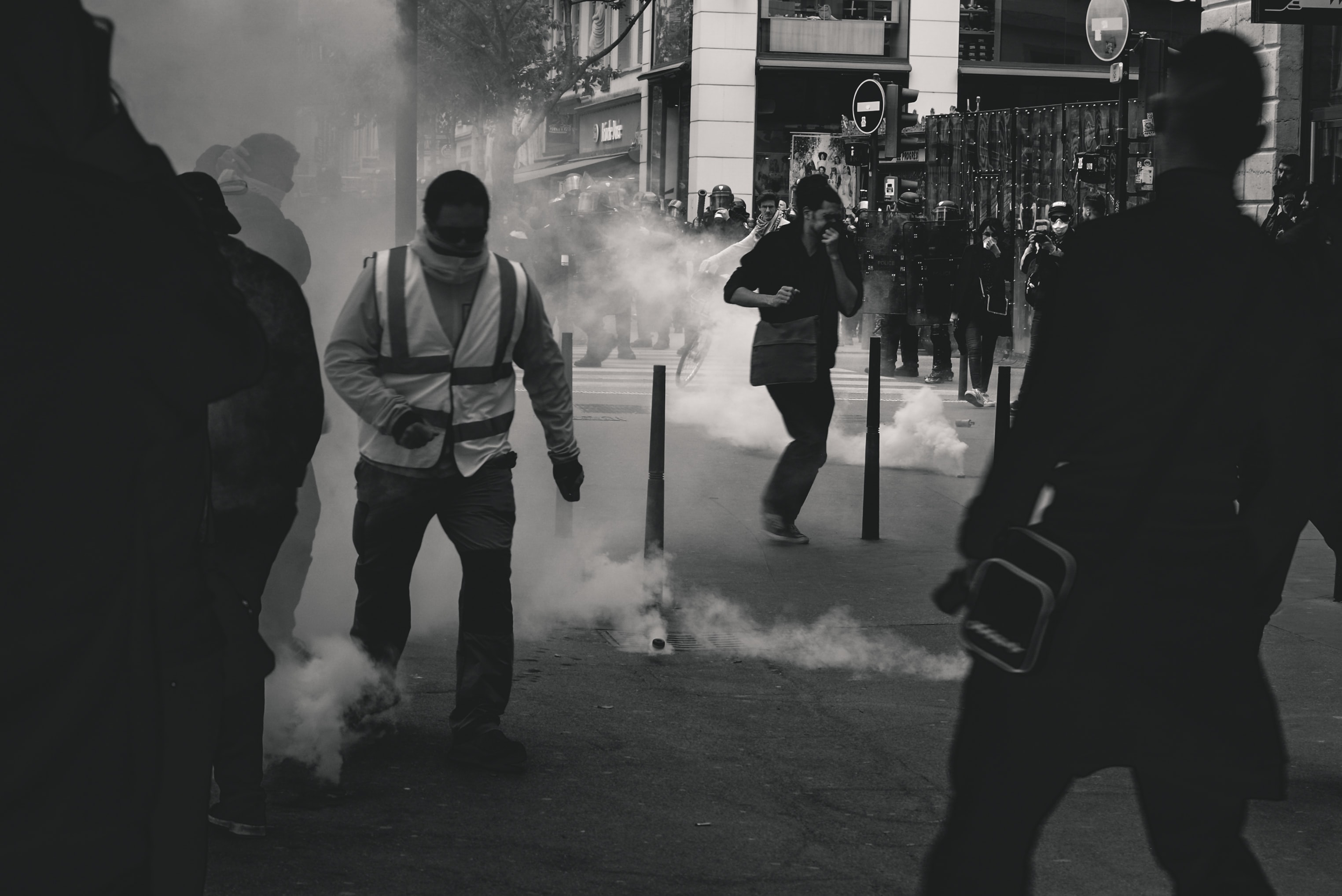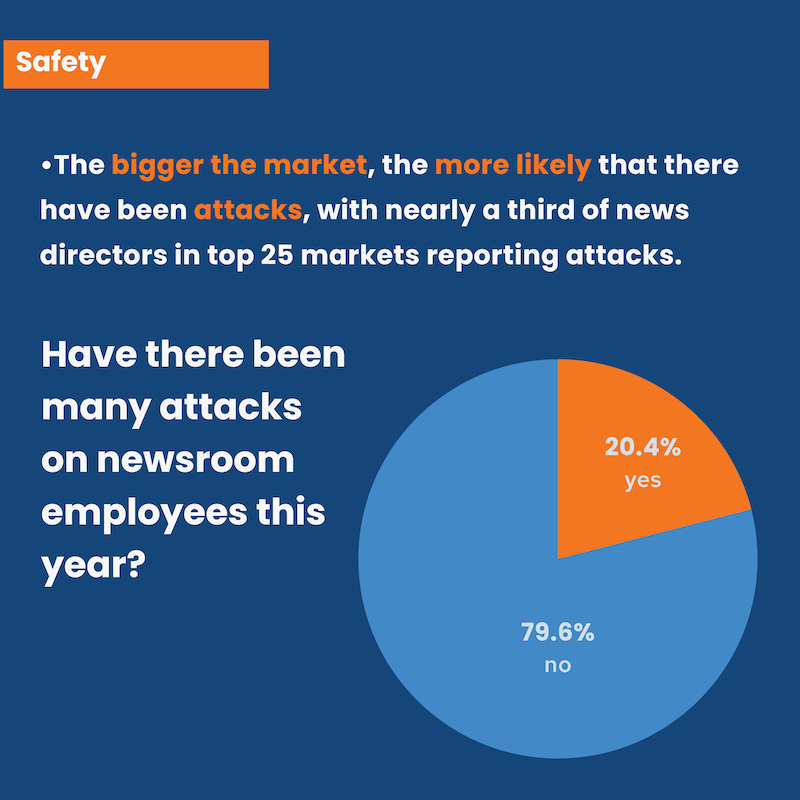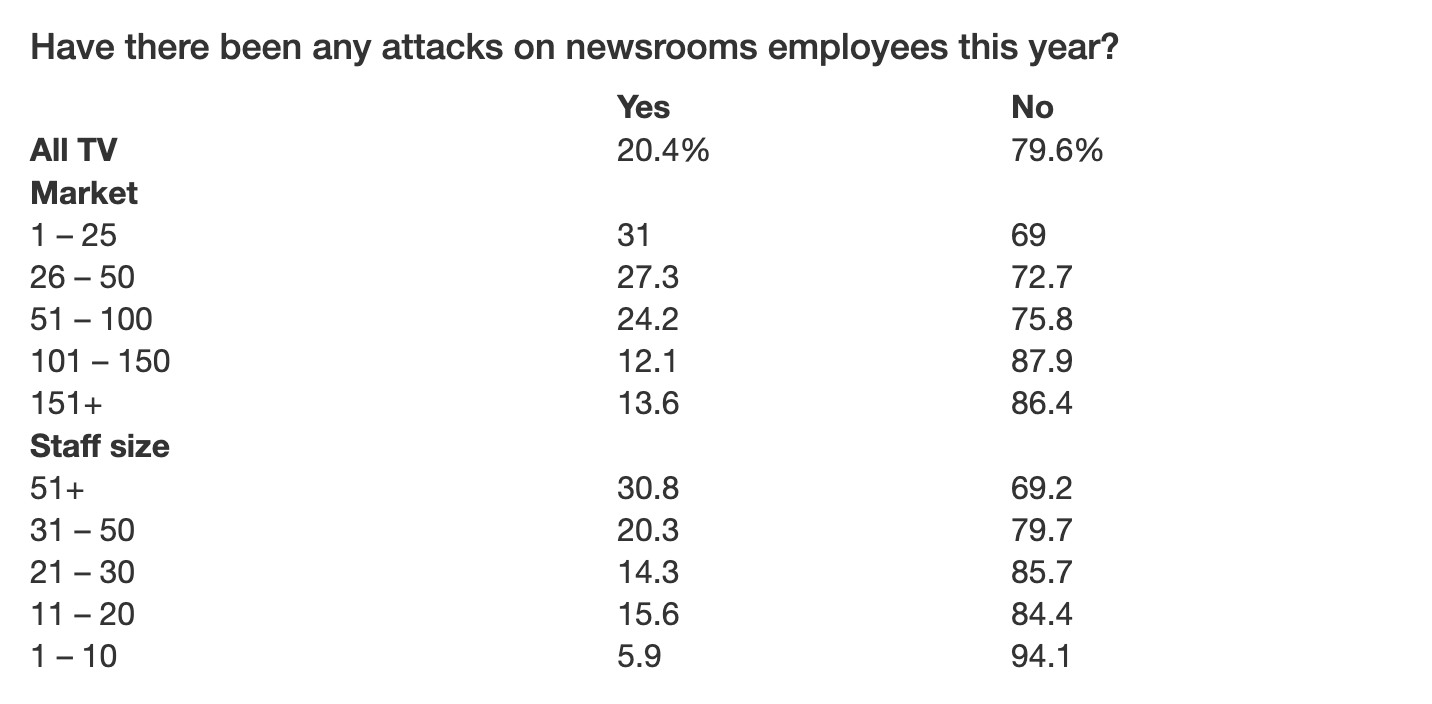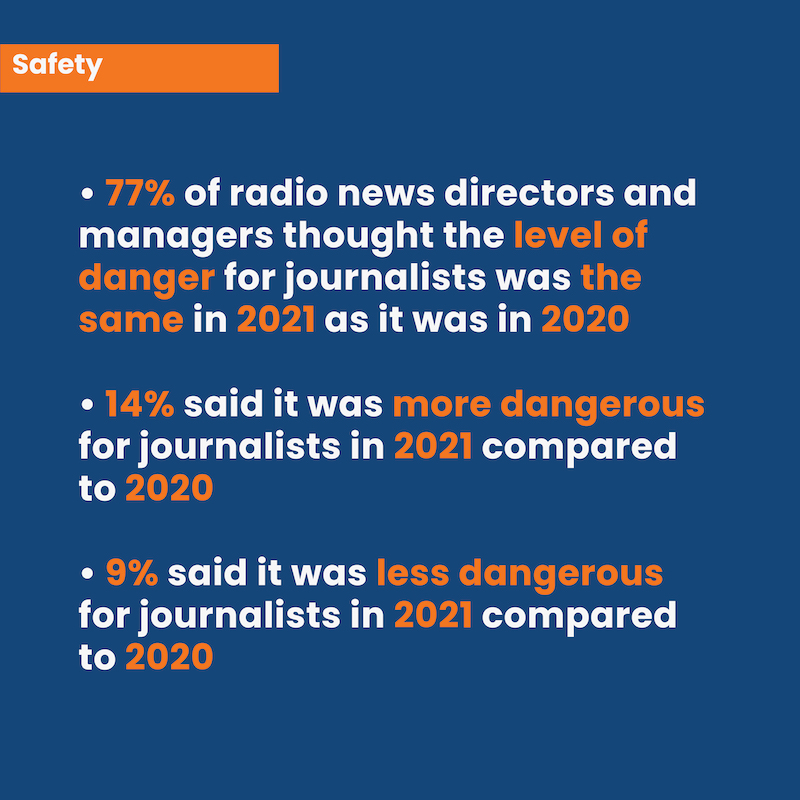More Than 1 in 5 TV News Directors Say Their Journalists Were Attacked in 2021

More than one in five TV news directors reported there had been an attack on their newsroom employees in 2021, the continuation of a troubling trend of increased danger to journalists. That is one of the key findings in the latest RTDNA/Newhouse School at Syracuse University Survey.

It was the second consecutive year that at least that many TV news directors reported these physical attacks and verbal threats.
The bigger the market, the more likely that there have been attacks, with nearly a third of news directors in top 25 markets reporting attacks. While that’s lower than last year, news directors in markets 101 and smaller reported increases in attacks compared to 2020. Journalism is most dangerous in the West and then Northeast — less dangerous in the South.

A year ago, almost half of the attacks were against crews covering what news directors described as riots, protests and civil unrest. Security increased at stations as fences, locks and gates were installed. One-person crews became two-person; two-person crews became three. This year, attacks were much more varied and seemingly random.
What happened? Many survey respondents offered anecdotes, including:
- One photographer was attacked while covering an out-of-hand fraternity party
- One reporter was approached on the street and hit unprovoked
- One reporter had a drink thrown at them from a car
- Police detained a news crew covering a protest
- One crew had its car surrounded by a group of people, who shook and pounded on it
- Multiple reporters were spit on, and one was spit on several times
- One photographer was hit in the face by a rock
- One photographer was punched at a crime scene
- Several reporters were the victims of racist verbal harassment
- One anchor received a death threat
- Several crews had their gear damaged or broken
Several TV news directors reported their staff receives constant harassment, whether via phone calls or emails.
A majority of TV news directors (52.2%) thought that 2021 was about the same in danger to journalists as 2020; more than a quarter (27.4%) thought 2021 was more dangerous, and 20.4% thought it was less dangerous.
Interestingly, there wasn’t much difference based on market size or staff size, network affiliation or region.
Radio
Not surprisingly, the level of attacks at radio stations and on radio news people is much lower. Of radio news directors and general managers, 3% reported attacks on newsroom employees. A year ago, it was primarily a problem in major markets, with 1 million and more people. This past year, market size made no meaningful difference. A year ago, region made no difference. This time, most of the attacks were in the West and Midwest, and news directors and general managers in the West were more than twice as likely to say 2021 was more dangerous than the year before.

More than three-quarters (77%) of radio news directors and general managers thought the level of danger for journalists was about the same in 2021 as it was in 2020. Fourteen percent said it was more dangerous; nine percent said less.
Among the anecdotes included:
- A couple of journalists were targeted by local and federal police while covering a protest and were hit with tear gas and rubber bullets
- One journalist was stopped on the road while trying to cover a wildfire and told to leave because of his ethnicity. Those who stopped him said they would “beat him up” if he didn’t comply
- One reporter had hot coffee thrown on him, and his microphone stolen while covering a protest
Similar to TV news directors, several radio news directors and general managers reported their employees had been victims of phone and internet harassment, which included threats.
Bob Papper is Adjunct Professor of Broadcast and Digital Journalism at Syracuse University and has worked extensively in radio and TV news.
Keren Henderson is Associate Professor of Broadcast and Digital Journalism at Syracuse University. This research was supported by the S. I. Newhouse School of Public Communications at Syracuse University and the Radio Television Digital News Association.
About the Survey
The RTDNA/Newhouse School at Syracuse University Survey was conducted in the fourth quarter of 2021 among all 1,780 operating, non-satellite television stations and a random sample of 3,379 radio stations. Valid responses came from as many as 1,336 television stations (75.1%) and 765 radio news directors and general managers representing 2,310 radio stations. Some data sets (e.g. the number of TV stations originating local news, getting it from others and women TV news directors) are based on a complete census and are not projected from a smaller sample.
